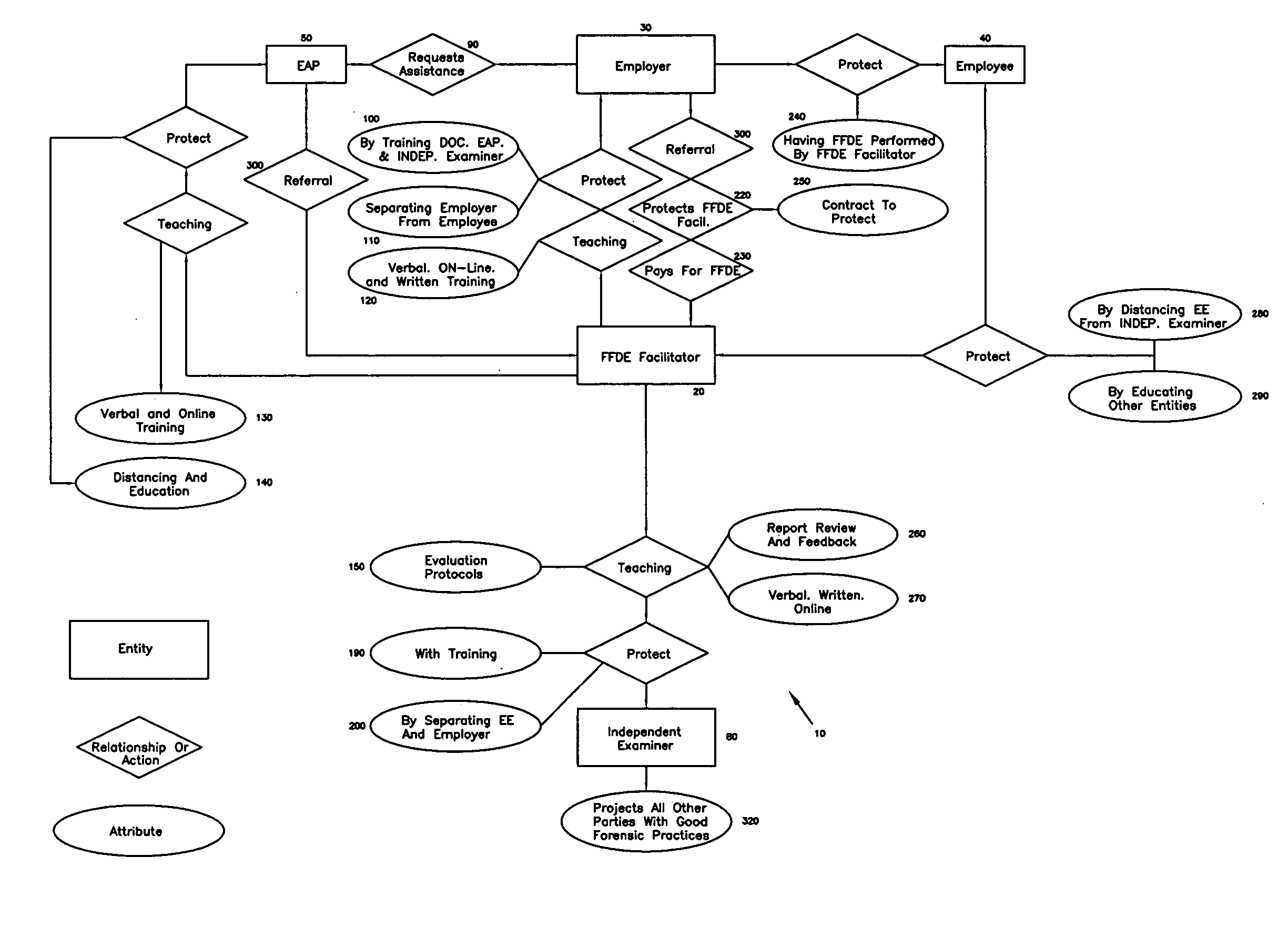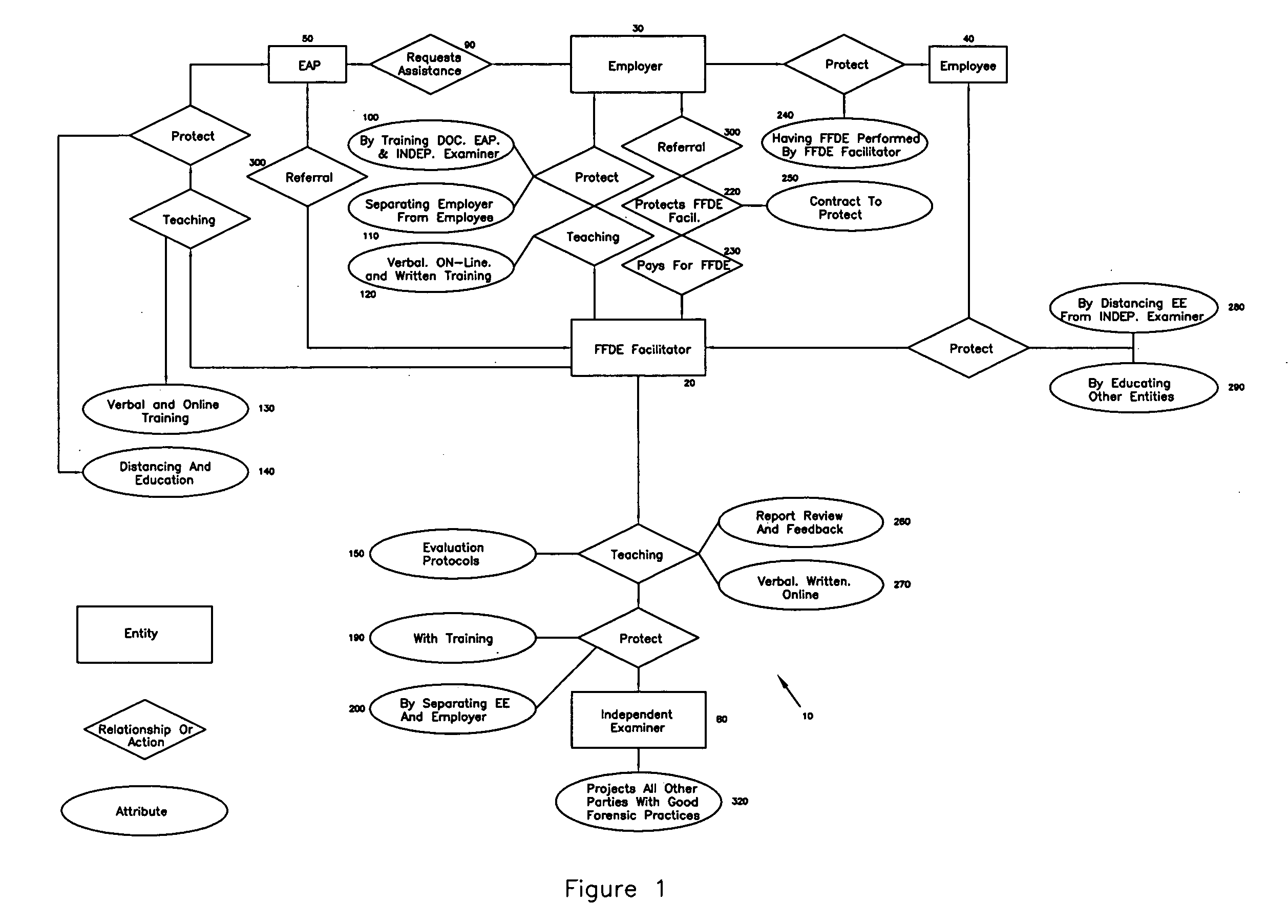Method for evaluating fitness for duty
a technology for evaluating the fitness for duty and employees, applied in the field of evaluating employees, can solve the problems of reducing workplace productivity, acrimony, violence, even death, and employers can be liable for hostile work environments, so as to reduce the likelihood and appearance of dual relationships, promote fairness and objectivity, and reduce employee productivity
- Summary
- Abstract
- Description
- Claims
- Application Information
AI Technical Summary
Benefits of technology
Problems solved by technology
Method used
Image
Examples
Embodiment Construction
[0044] Referring now to FIG. 1, the current preferred embodiment of the present invention is illustrated. It represents the unique combination of services, as well as business and professional relationships established by the FFDE Facilitator 20.
[0045] Among other things, FIG. 1 illustrates the relationship between the employer 30 and the FFDE Facilitator 20. It indicates that the FFDE Facilitator 20 consults with and teaches 60 the employer 30 using training 120 designed for the employer 30 and consultative services delivered verbally, on-line, or by other means. Further, the FFDE Facilitator 20 protects 70? the employer 30 by insulating 110,140,200,250 the employer 30 from all other parties, as well as by enhancing the quality of the assessment with methods such as training the Independent Examiner 80 and the Employee Assistance Program 50 professionals. (FIG. 1 also indicates that the employer 30 may refer the employee 40 to the FFDE Facilitator 20). The employer 30 legally prot...
PUM
 Login to View More
Login to View More Abstract
Description
Claims
Application Information
 Login to View More
Login to View More - R&D
- Intellectual Property
- Life Sciences
- Materials
- Tech Scout
- Unparalleled Data Quality
- Higher Quality Content
- 60% Fewer Hallucinations
Browse by: Latest US Patents, China's latest patents, Technical Efficacy Thesaurus, Application Domain, Technology Topic, Popular Technical Reports.
© 2025 PatSnap. All rights reserved.Legal|Privacy policy|Modern Slavery Act Transparency Statement|Sitemap|About US| Contact US: help@patsnap.com


